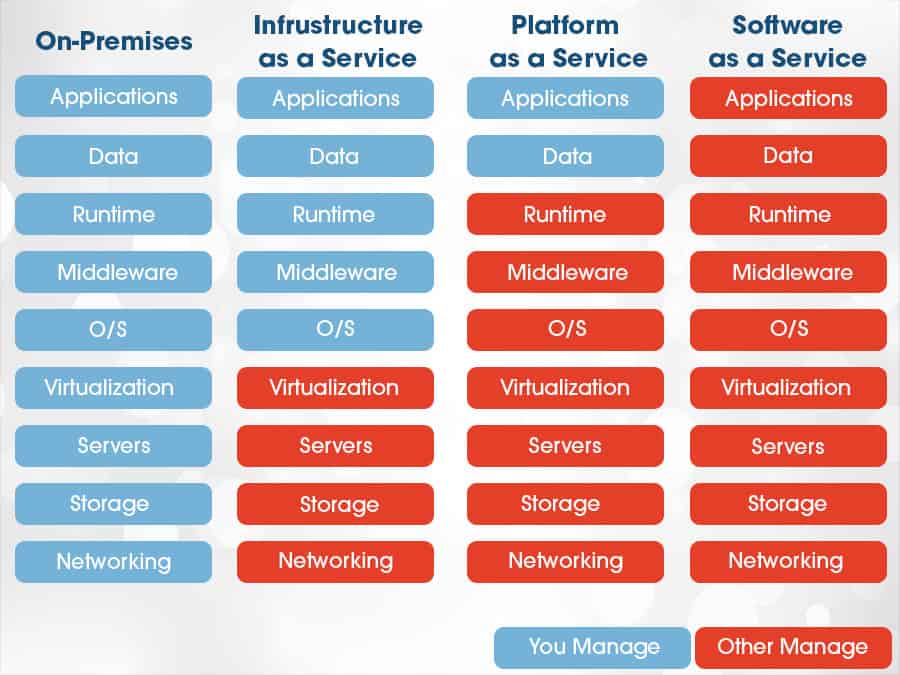Achieve Seamless Scalability With Cloud Services
In the ever-evolving landscape of cloud services, achieving seamless scalability stands as a foundation for modern-day companies looking for to stay versatile and competitive. The capability to effortlessly expand or get resources in response to changing demands is a pivotal benefit in today's hectic digital atmosphere. By understanding the art of scalable cloud services, companies can not only enhance efficiency and simplify procedures but likewise lead the means for future growth and technology. The mission for smooth scalability with cloud solutions unveils a globe of opportunities for those ready to accept the transformative power of vibrant resource management.
Benefits of Cloud Scalability
Cloud scalability supplies organizations the flexibility to dynamically adjust sources based on need, making sure optimal efficiency and cost effectiveness. One key benefit is the capacity to range sources up or down quickly in action to varying work. This agility enables services to meet altering consumer needs without over-provisioning resources, inevitably bring about cost financial savings. Scalability additionally boosts performance by ensuring that systems can take care of enhanced website traffic or workload without experiencing downtime or downturns. By successfully assigning sources, organizations can maintain high degrees of efficiency throughout peak times without unneeded costs during quieter periods. In addition, cloud scalability advertises technology and experimentation by enabling services to conveniently check originalities and scale them as needed. This versatility urges a society of continual renovation and adaptation, making it possible for organizations to stay affordable in a swiftly advancing market landscape. Eventually, the benefits of cloud scalability extend beyond price savings to encompass improved efficiency, agility, and development.
Key Features for Scaling
Effective scaling in cloud services counts on vital functions that make it possible for organizations to readjust resources dynamically based upon need. One important attribute for scaling is elasticity, permitting sources to scale up or down in action to fluctuating work. This guarantees that companies can satisfy performance needs without over-provisioning resources. Another key function is scalability, making it possible for systems to handle boosted work by adding sources effortlessly. This attribute is vital for accommodating development without endangering efficiency. In addition, automation plays a crucial role in scaling by automating the provisioning and de-provisioning of sources based upon predefined policies. Automation minimizes human treatment, enhances effectiveness, and guarantees quick response to changing demands. Surveillance and analytics tools are likewise important for scaling, supplying understandings right into source usage, efficiency metrics, and potential bottlenecks. These tools allow companies to optimize and make informed decisions source allocation for effective scaling. In general, these vital features jointly empower organizations to accomplish smooth scalability in cloud solutions.
Carrying Out Auto-Scaling Approaches
To efficiently maximize resource allowance and adapt to differing workloads, organizations must tactically execute auto-scaling methods in their cloud services framework. Auto-scaling enables systems to automatically change the variety of compute resources based upon real-time need. There are various auto-scaling techniques that companies can utilize, such as predictive scaling, which makes use of historic data to forecast future resource demands, and reactive scaling, which replies to present work changes.

Finest Practices for Scalability
For organizations intending to boost their scalability in cloud solutions, executing ideal techniques is crucial for optimum performance and i was reading this source administration. One key ideal technique is creating applications with a microservices architecture. This strategy breaks down applications right into smaller, independent services that can be released, upgraded, and scaled independently, allowing for higher versatility and scalability.
Another vital technique is using containerization technology, such as Docker or Kubernetes. Containers make it possible for the packaging of applications and their dependencies into separated systems, making it less complicated to scale components individually and see this page deploy them consistently throughout different settings.
Furthermore, applying automated deployment and framework as code (IaC) can enhance scalability efforts (linkdaddy cloud services). Automation tools like Terraform or Ansible aid in provisioning and managing resources successfully, decreasing hand-operated mistakes and making it possible for rapid scalability
Additionally, keeping track of efficiency metrics, establishing signals, and conducting routine ability planning are vital techniques to make sure positive scalability monitoring. By adhering to these best practices, organizations can accomplish smooth scalability in their cloud services while enhancing performance and resource use.
Monitoring Performance Metrics
When assessing the efficiency of cloud solutions scalability, carefully keeping an eye on efficiency metrics is important for guaranteeing optimum performance and resource allocation. By continuously tracking crucial efficiency signs (KPIs) such as reaction times, resource, latency, and throughput utilization, organizations can gain valuable understandings into the health and wellness and efficiency of their cloud facilities. Checking efficiency metrics permits the early discovery of prospective bottlenecks or issues that might affect scalability, allowing proactive actions to find out this here be required to address them before they escalate.

Conclusion
In verdict, attaining smooth scalability with cloud services is important for organizations to maximize efficiency, boost development, and maintain high efficiency levels during peak times. By leveraging the benefits of cloud scalability, carrying out auto-scaling methods, using key attributes such as flexibility and automation, and adhering to finest practices like application layout and efficiency surveillance, services can efficiently scale their systems while making best use of source application and efficiency.
The mission for seamless scalability with cloud solutions unveils a world of possibilities for those eager to embrace the transformative power of vibrant resource monitoring.
Cloud scalability uses companies the flexibility to dynamically readjust sources based on demand, guaranteeing ideal performance and expense efficiency. An additional crucial feature is scalability, enabling systems to handle raised work by adding sources seamlessly.For companies intending to boost their scalability in cloud services, applying best techniques is essential for optimum performance and source management.When examining the efficiency of cloud services scalability, very closely keeping track of efficiency metrics is essential for making certain optimum functionality and resource allotment.
Comments on “Universal Cloud Service: Versatile and Scalable Solutions for Every Sector”